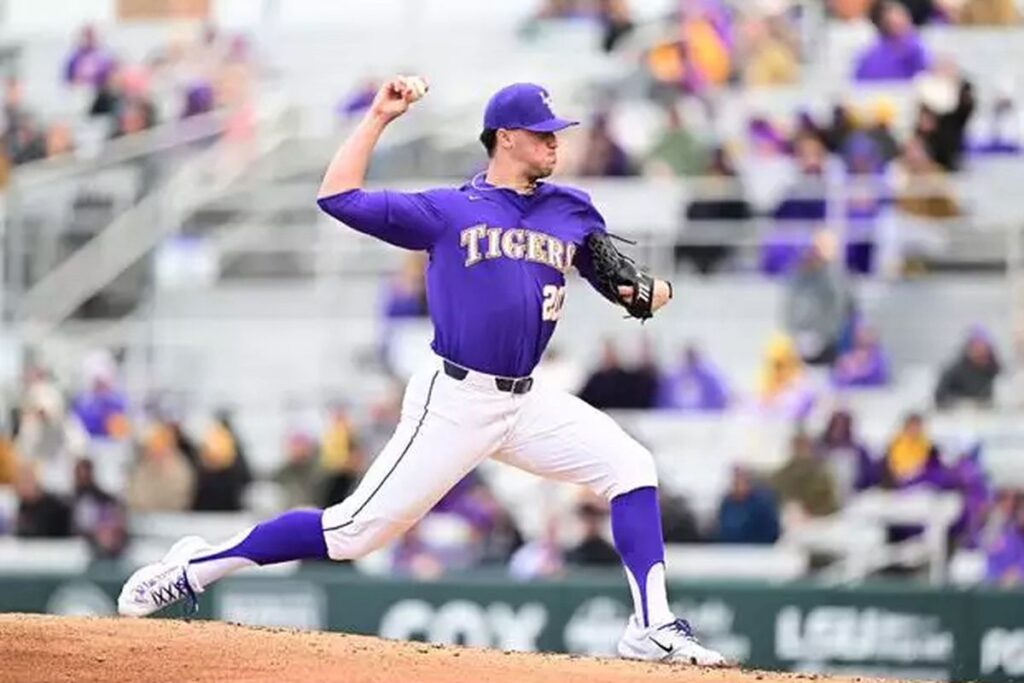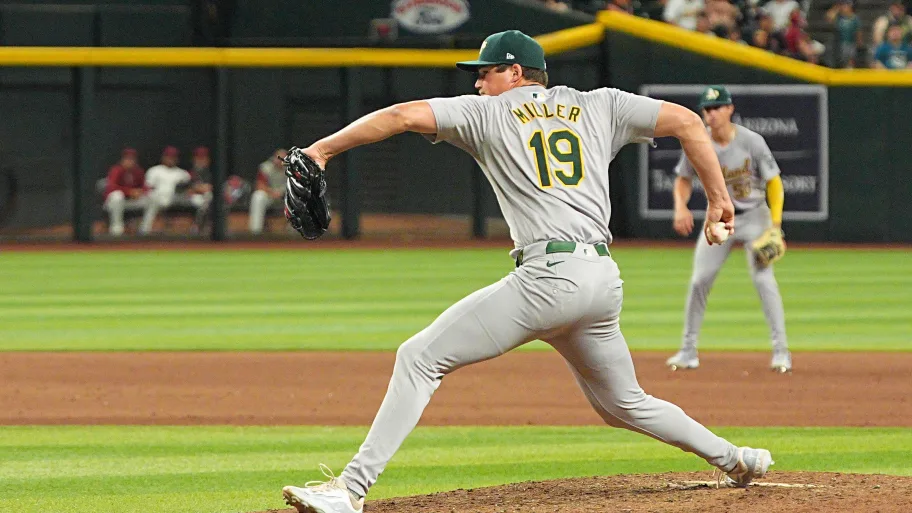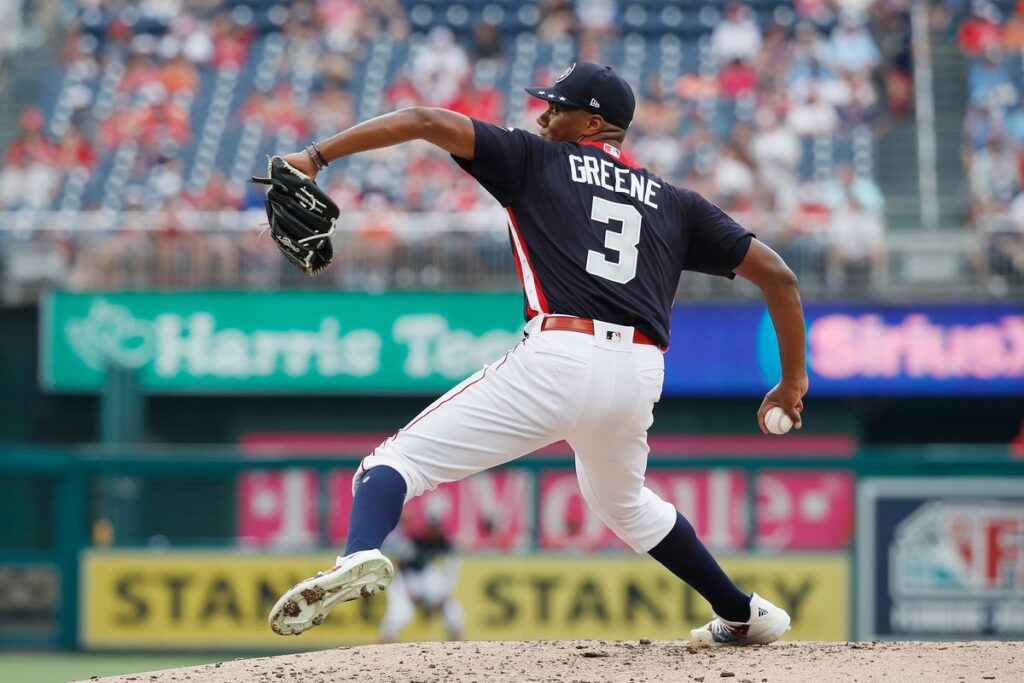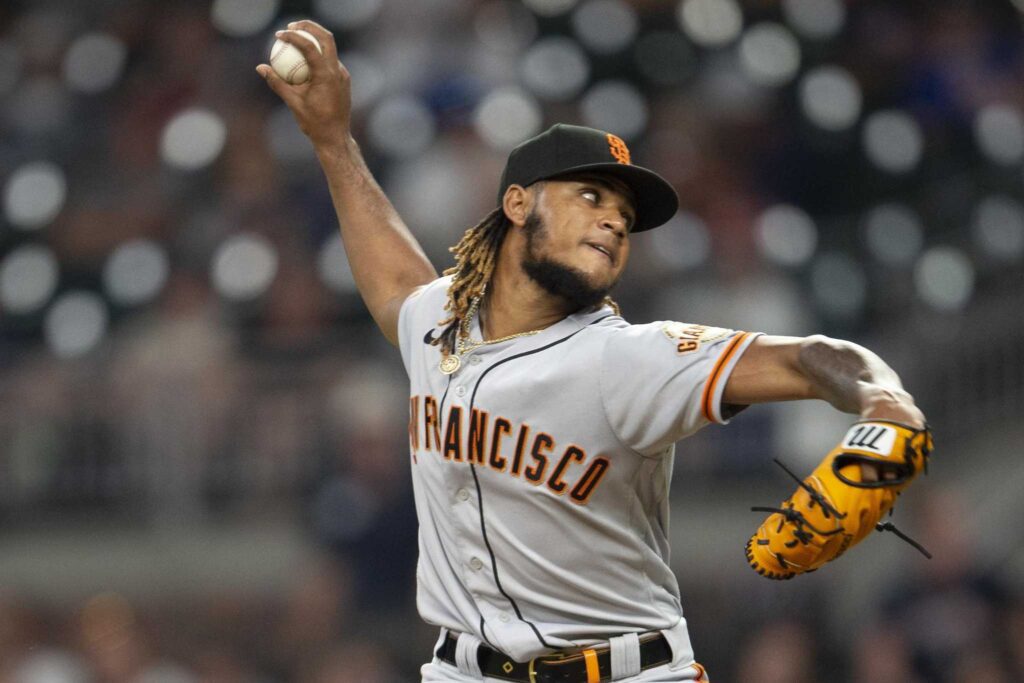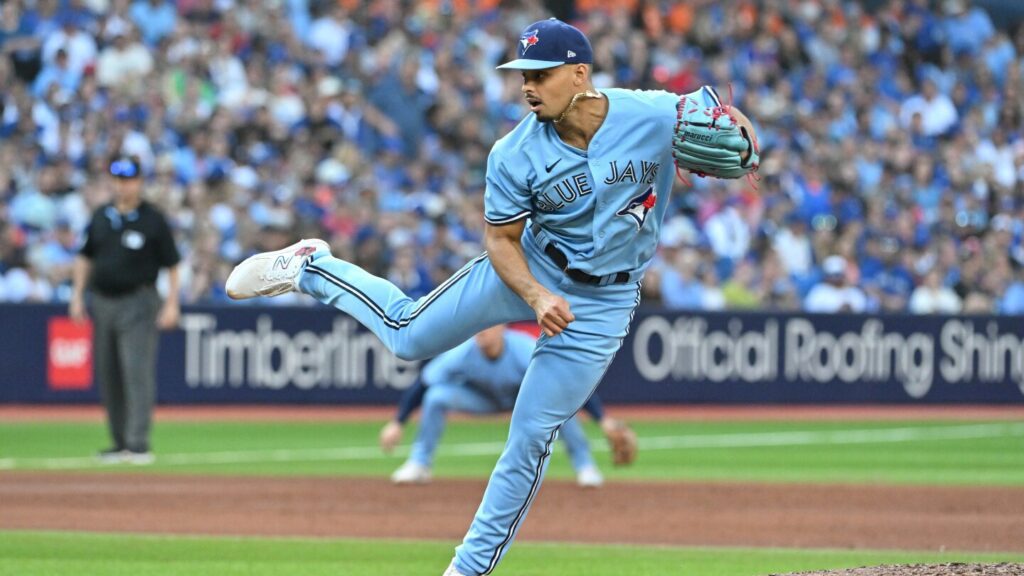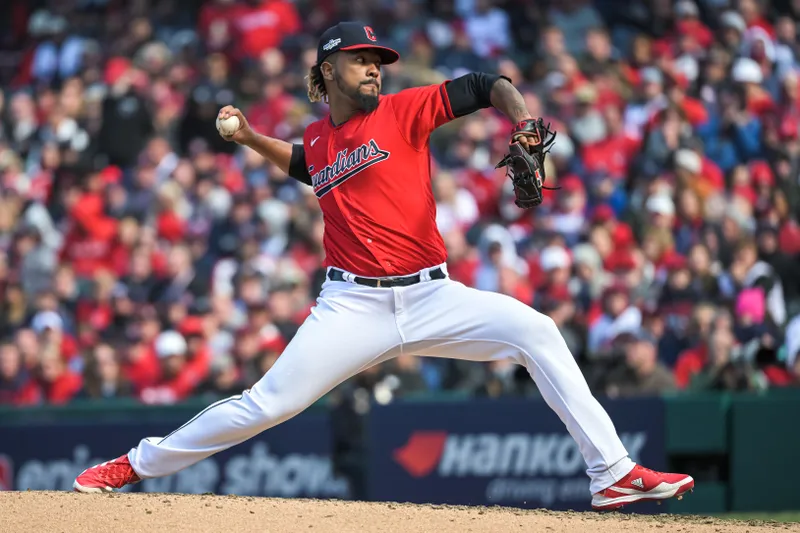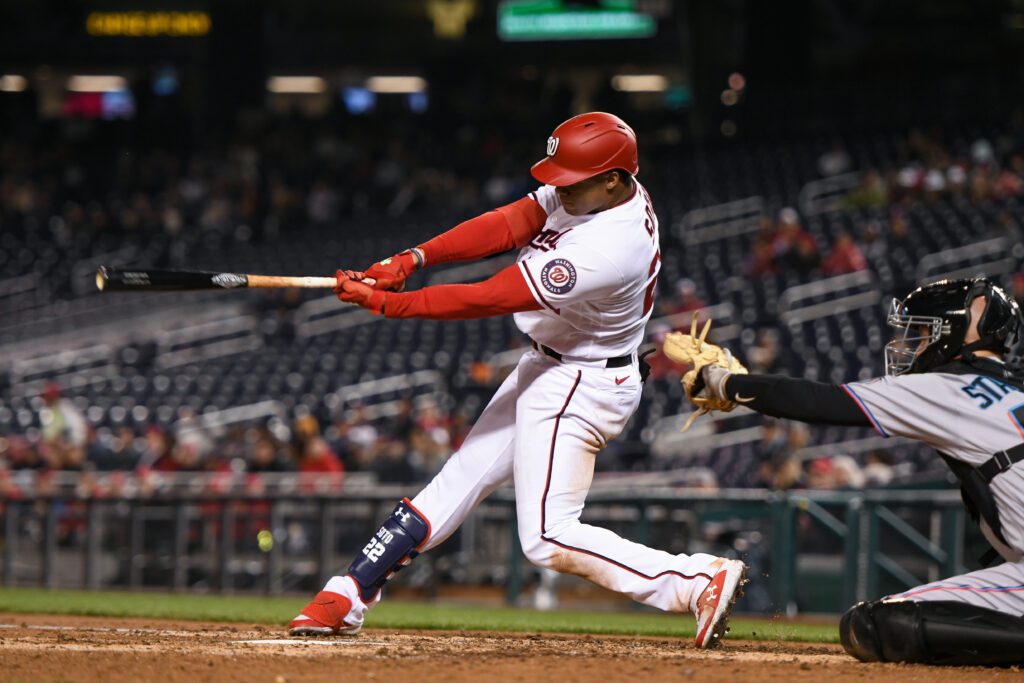In the early days of Major League Baseball, pitchers like Walter Johnson and Bob Feller captivated audiences with their blazing fastballs, often clocked at speeds that defied the technology of their time. As the game evolved, so did the emphasis on pitch velocity. Today, the fastest pitchers in the MLB are not just marvels of athleticism but also strategic assets, leveraging speed to dominate hitters and influence game outcomes.
Pitching speed has always been a spectacle. Legends like Nolan Ryan and Randy Johnson set benchmarks that inspired generations. Ryan’s fastball, often exceeding 100 mph, was a testament to his enduring prowess, while Johnson’s intimidating presence and velocity redefined left-handed pitching. These pioneers laid the groundwork for today’s emphasis on speed, where the fastest pitchers in the MLB are celebrated for their ability to challenge hitters with sheer power.
Top 10 Fastest Pitchers in the MLB in 2025
The 2025 season has showcased a new era of flamethrowers, each bringing unique strengths to their teams. Here are the top 10 fastest pitchers in the MLB this year:
Paul Skenes – Pittsburgh Pirates
Average Fastball Velocity: 100.1 mph
Top Velocity: 102.5 mph
Paul Skenes has become one of the most electrifying young arms in the league—and he hasn’t even completed a full season. After dominating at LSU and leading them to a national title, Skenes was selected No. 1 overall by the Pittsburgh Pirates. A product of the Air Force Academy before transferring to LSU, Skenes combines military discipline with elite athleticism.
What sets Skenes apart isn’t just the triple-digit heat—it’s his advanced pitch mix, including a devastating slider and a splitter that vanishes at the plate. He carries himself like a veteran, fields his position well, and commands the strike zone like someone far beyond his years.
Pirates fans have quickly embraced him as the face of the franchise. He’s viewed as a potential savior for a rebuilding organization—an ace who could carry Pittsburgh back to October relevance. His power, poise, and presence on the mound make every start a must-watch event.
Mason Miller – Oakland Athletics
Average Fastball Velocity: 99.8 mph
Top Velocity: 102.0 mph
Mason Miller, a product of Division III Waynesburg University before transferring to Gardner-Webb, is a true underdog story. Diagnosed with Type 1 diabetes, he defied expectations and proved his elite potential in the minor leagues, skyrocketing through the A’s system with his overpowering fastball and sharp breaking stuff.
Now anchoring the bullpen for Oakland, Miller’s heater is a weapon that routinely flirts with 102 mph. But it’s not just the speed—it’s the angle, the late life, and his fearless approach that make him one of the most uncomfortable at-bats in the game.
A’s fans love Miller not only for his arm but for his story. He’s humble, resilient, and fiercely competitive—everything a fan base can rally behind. While the team is in a rebuilding phase, Miller represents the exciting future of pitching in the organization.
Jhoan Duran – Minnesota Twins
Average Fastball Velocity: 99.6 mph
Top Velocity: 101.9 mph
Signed out of the Dominican Republic as a teenager, Jhoan Duran’s path to the big leagues was anything but easy. He steadily climbed the ranks, eventually becoming the Twins’ most intimidating bullpen arm. Now a closer, Duran relies on his four-seam fastball and “splinker” (a splitter-sinker hybrid) that can reach the upper 90s.
What makes Duran terrifying for hitters is his combination of speed and unpredictability. His fastball explodes late, and his secondary pitches dive out of the zone violently. He’s a nightmare matchup, especially in high-leverage moments.
Twins fans love his passion. When he strikes out the side to seal a game, the energy is electric. His fire, consistency, and raw power have made him one of the top closers in the American League and a fan favorite in Minnesota.
Hunter Greene – Cincinnati Reds
Average Fastball Velocity: 99.5 mph
Top Velocity: 102.3 mph
Hunter Greene was a sensation before he threw a single professional pitch. Drafted No. 2 overall in 2017 out of Notre Dame High School in California, Greene’s fastball was clocked at over 100 mph as a teenager. A former two-way player, he eventually focused solely on pitching—and the results have been electric.
After battling injuries early in his career, Greene has emerged as a top-line starter for the Reds. His fastball is explosive, his slider is sharp, and his poise continues to develop with every outing.
Cincinnati fans have embraced Greene as a future ace, a rare blend of marketable personality and elite talent. When he’s healthy, few pitchers are more dynamic—and the potential ceiling remains sky-high.
Camilo Doval – San Francisco Giants
Average Fastball Velocity: 99.3 mph
Top Velocity: 101.7 mph
Signed as an international free agent from the Dominican Republic, Camilo Doval worked his way through the Giants system with an electric arm and ever-improving command. Now the go-to closer in San Francisco, Doval brings a swagger and velocity combo that’s hard to match.
Doval’s fastball has tremendous run and rides in on hitters, especially right-handers. He complements that with a sweeping slider that can make even the best hitters look foolish.
Fans in San Francisco appreciate Doval’s confidence and fire. He walks out to close games like he owns the mound—and more often than not, he does. He’s become a staple of high-pressure moments and a big reason the Giants stay competitive late in games.
Jordan Hicks – Toronto Blue Jays
Average Fastball Velocity: 99.2 mph
Top Velocity: 101.5 mph
Jordan Hicks is one of the most fascinating pitchers in the league. Drafted by the Cardinals out of high school, Hicks made headlines early in his career by touching 105 mph. After Tommy John surgery sidelined him, he returned with even more precision, adding depth to his arsenal and a more refined approach.
Now with the Toronto Blue Jays, Hicks has settled into a late-inning relief role where his velocity and movement can shine. His sinker, in particular, is one of the most devastating pitches in baseball, often clocking above 100 mph with heavy run.
Fans are drawn to Hicks for more than his speed. He’s overcome adversity, embraced the spotlight, and matured into a calm, focused competitor. In a bullpen full of heat, he’s the flamethrower everyone’s watching.
Emmanuel Clase – Cleveland Guardians
Average Fastball Velocity: 99.0 mph
Top Velocity: 101.2 mph
Originally signed by the Padres and later traded to the Guardians, Emmanuel Clase has quietly become one of the most dominant closers in baseball. His cutter is legendary—thrown at 100 mph, it behaves more like a slider and consistently breaks bats.
Clase is more than a velocity machine; he’s a technician with remarkable control. He keeps the ball low, minimizes mistakes, and attacks hitters with a plan.
In Cleveland, Clase has become a symbol of dependability. Fans know that when he enters a game, the door is closing fast—both literally and figuratively. His calm demeanor and ruthless execution make him beloved among teammates and supporters alike.
Félix Bautista – Baltimore Orioles
Average Fastball Velocity: 98.9 mph
Top Velocity: 101.0 mph
Félix Bautista took a non-traditional path to MLB stardom. Signed at age 16, he didn’t reach the majors until his mid-20s—but when he did, he made a massive impression. Towering on the mound at 6’8”, Bautista’s fastball looks even faster coming downhill.
His velocity is matched by his devastating splitter, and when he’s locked in, he’s virtually unhittable. Known as “The Mountain,” Bautista gives off old-school closer vibes with modern power.
Orioles fans have latched onto his late-game heroics, especially as the team has entered a new era of competitiveness. His entrances are theatrical, and his results back up the hype. Baltimore has found a true weapon at the back end of the bullpen.
Justin Martinez – Arizona Diamondbacks
Average Fastball Velocity: 98.7 mph
Top Velocity: 100.9 mph
A product of the Dominican Republic, Justin Martinez emerged as a high-upside relief prospect thanks to his electric arm and fearless approach. Still developing his command, Martinez already boasts one of the fastest fastballs in the game.
He’s young, hungry, and unafraid to challenge hitters inside. His slider and splitter continue to improve, and his raw stuff makes him a future candidate for high-leverage innings.
Fans in Arizona appreciate his energy. He pitches with confidence, and his rise through the system represents the D-Backs’ commitment to developing impact arms. He’s still learning, but his ceiling is as high as any pitcher on this list.
Jacob deGrom – Texas Rangers
Average Fastball Velocity: 98.5 mph
Top Velocity: 100.7 mph
Despite battling injuries in recent seasons, Jacob deGrom remains one of the most respected and awe-inspiring pitchers in baseball. Drafted out of Stetson University as a converted shortstop, deGrom developed into a two-time Cy Young Award winner and the gold standard for power and precision.
Even at this stage of his career, deGrom’s fastball routinely touches the upper 90s with laser-like accuracy. His ability to command multiple pitches with elite movement separates him from the rest of the flamethrowers.
Fans across the league—not just in Texas—adore deGrom for his quiet dominance, work ethic, and rare talent. He’s a craftsman with power, and even a shortened season from deGrom is better than most pitchers at full strength.
The Anatomy of a Flamethrower: What It Takes to Join Baseball’s Velocity Elite
To consistently rank among the fastest pitchers in the MLB, a player needs far more than just a strong arm. Pitching at 100 mph or higher is a rare combination of natural-born attributes, precise mechanical execution, and relentless physical development. It’s not a skill that can simply be taught—it’s built from a foundation of unique genetics, honed through years of disciplined refinement, and powered by an elite competitive mindset.
For most pitchers, even reaching the mid-90s is a major accomplishment. But for the rare few who regularly sit in the upper 90s or touch triple digits, the journey starts with physiology. Muscle fiber composition—particularly a higher ratio of fast-twitch fibers—gives these athletes explosive force generation. Shoulder flexibility, elbow integrity, hip rotation, and spinal mobility all contribute to creating torque and maximizing the kinetic chain. These athletes are often outliers in how their bodies move and recover.
Yet raw physical ability is only part of the equation. High-velocity pitchers rely on structured, cutting-edge training regimens tailored to enhance rotational strength, shoulder stability, and hip explosiveness. Weighted ball programs, plyometrics, and year-round conditioning help fine-tune their delivery while preserving joint health and arm strength. Many of the fastest pitchers in the MLB today are students of biomechanics—they study movement patterns frame by frame to eliminate inefficiencies and reduce injury risk.
Mechanics are perhaps the most underrated piece of the velocity puzzle. Perfect sequencing of the body—from foot plant to hip rotation, to arm whip—allows a pitcher to transfer energy without losing speed or control. A high-effort delivery might look violent to the naked eye, but underneath is a foundation of balance, rhythm, and body awareness. The best flamethrowers in baseball aren’t just strong—they’re mechanically sound and neurologically precise.
Mental strength is another defining trait. To throw 100 mph regularly requires confidence. These pitchers attack hitters. They don’t nibble—they challenge. That aggressiveness, coupled with velocity, puts batters on the defensive from the first pitch. And when a pitcher can combine elite speed with location and movement, he becomes nearly unhittable.
How Velocity Impacts Team Strategy and Culture
The fastest pitchers in the MLB don’t just affect games—they shape how teams build their rosters, manage innings, and approach matchups. High-velocity arms shorten games. With a dominant closer or flame-throwing reliever in the bullpen, managers can essentially play six-inning games, knowing they can lock down the final frames with overpowering speed.
In rotations, velocity gives a psychological edge before the first pitch is even thrown. Hitters must adjust their timing, widen their stance, or prepare for a pitch they can barely catch up to—often leading to mistimed swings and a steady stream of strikeouts or weak contact.
These pitchers also elevate bullpens. Their presence takes pressure off other arms and gives managers flexibility in high-leverage situations. They can come in with runners on, with the heart of the order due up, or even serve as openers. Their reliability becomes a pillar around which a team’s entire late-game approach is structured.
There’s also an intimidation factor. Velocity changes the energy of a ballpark. The crack of a bat sounds different when a pitch comes in at 101 mph—and more often, the bat doesn’t make contact at all. Fans lean forward, players get energized, and opposing hitters press. The fastest pitchers in the MLB don’t just throw hard—they change momentum with a single pitch.
The Future of Velocity
As the 2025 MLB season continues to unfold, one thing is clear: velocity is not just a trend—it’s the new standard. The fastest pitchers in the MLB are no longer rare outliers; they’re becoming essential components of competitive rosters. From blazing fastballs that challenge the limits of human performance to the strategic advantage they offer in late-game scenarios, these pitchers are reshaping how teams build bullpens and develop young arms.
But while raw speed is thrilling, it’s the combination of velocity with control, durability, and mental toughness that truly sets the elite apart. These ten pitchers have proven that reaching the top echelon of velocity is not just about arm strength—it’s about consistency, preparation, and harnessing natural gifts.
As training methods evolve and new generations of athletes rise, we can expect even more pitchers to flirt with and surpass the 100 mph threshold. Still, the fastest pitchers in the MLB will always stand out—not just for how hard they throw, but for how their presence shifts the energy of every at-bat, every inning, and every game they touch.
Velocity will always captivate, intimidate, and inspire. And in today’s game, it defines dominance.


